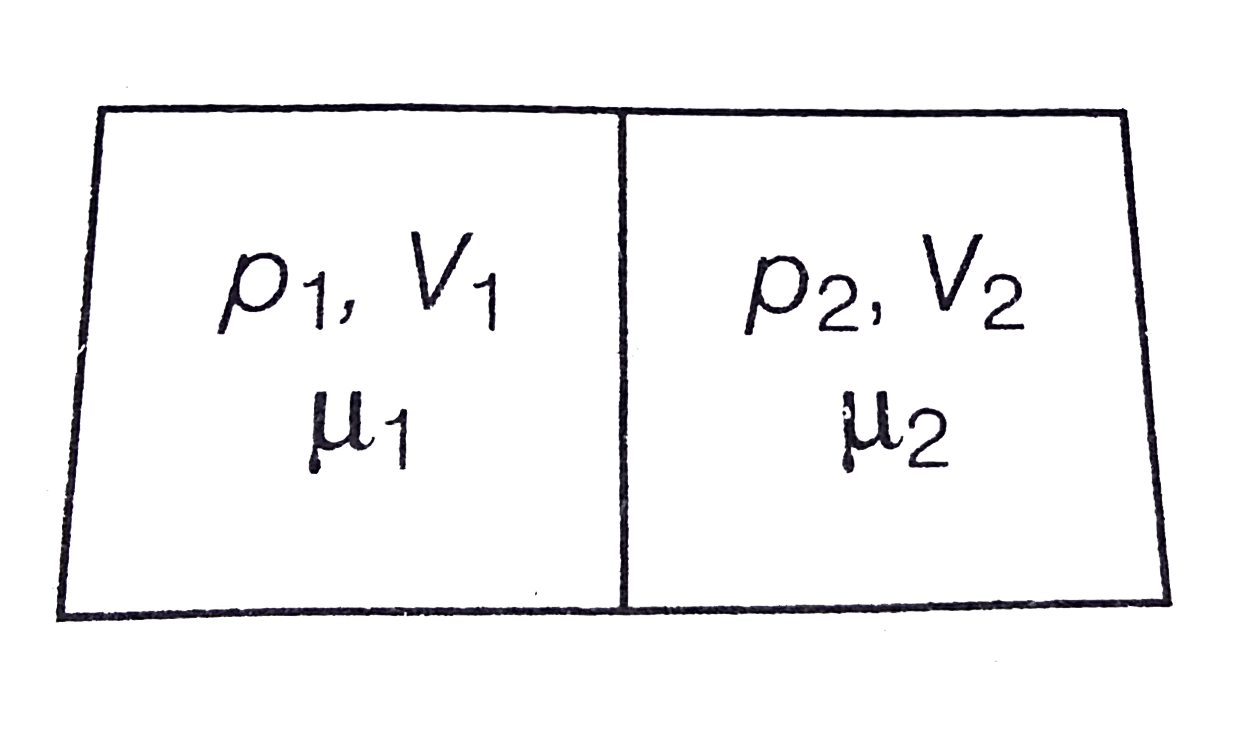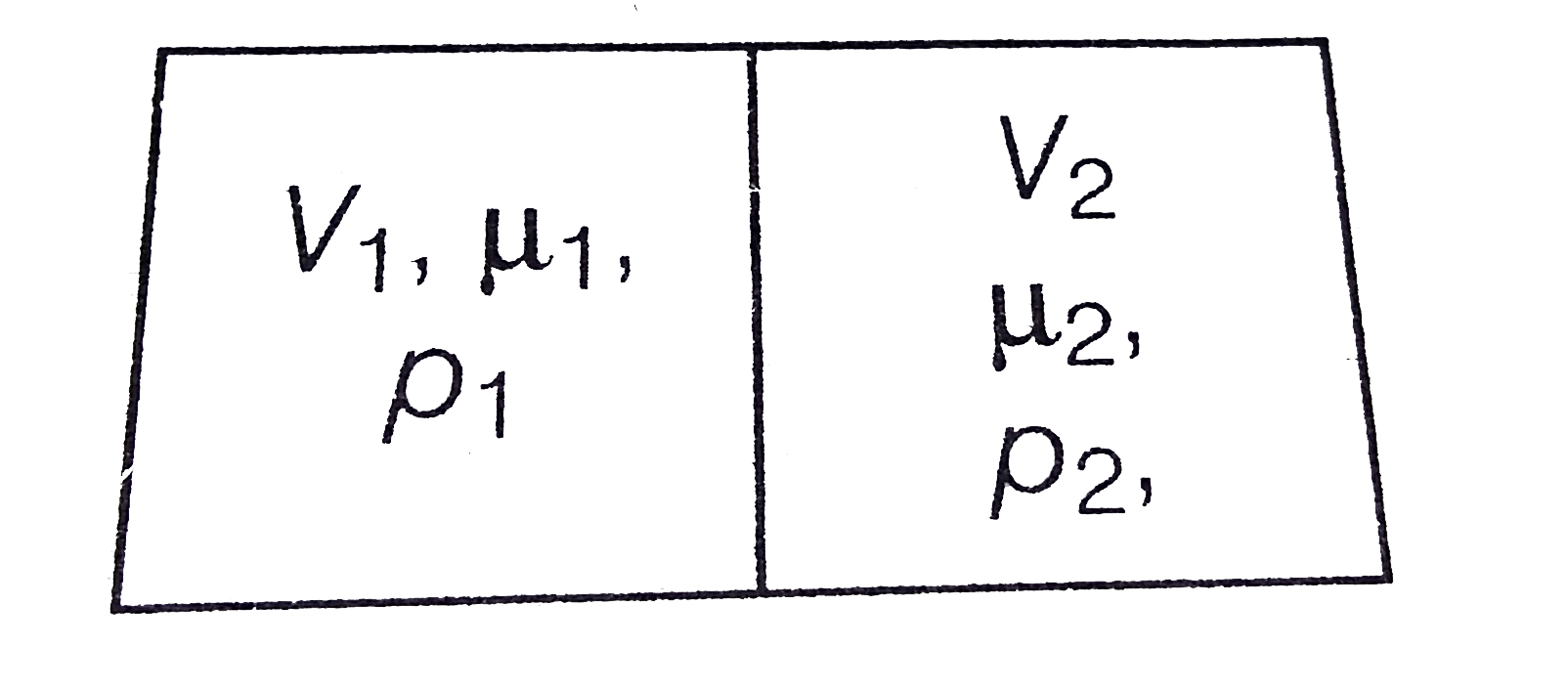The container shown in figure has two chambers separated by a partition of volumes V1=2.0L and V2=3.0L. The chambers contain μ14.0 and μ2=5.0 mole of a gas at pressure p1=1.00 atm and P2=2.00 atm. Calculate the pressure after the partition is removed and the mixture attains equilibrium.


Consider the diagram
Given V12.0L,V2=3.0L
μ14.0mol,μ2=5.0mol
p1=100atmp22.00atm
For chamber 1,p1,V1=μ1RT1
For chamber 2,p2,V2=μ2RT2
When the parition is removed the gasses get mixed wihtout any loss of energy . the mixture now attains a common equilibrium pressure and the total volume of the system is sum of the volume of individual chamber V1 and V2.
So μ=μ1+μ2,V=V1+V2
From kinetic theory of gasses,
For l mole pV=23μ1E1 [E=translationalkinetic energy]
For μ1 moles p1V1=23μ2E1
For μ2 moles P2V2=23μ2E2
Total energy is (μ1E1+μ2E2)=32(P1V1+P2V2)
From the above relation pV=23ETotal=23μEper mole
p(V1+V2)=23×32(P1V1+p2V2)
p=p1V1+p2V2V1+V2
=(1.00×2.0+2.00×3.02.0+3.0)atm
=8.05.0=1.60 atm
Topper's Solved these Questions
Similar Questions
Volume of 0.5 mole of a gas at 1 atm. pressure and 273∘C is
View SolutionAn insulated container of gas has two chambers separated by an insulating partition. One of the chambers has volume V1 and contains ideal gas at pressure P1 and temperature T1.The other chamber has volume V2 and contains ideal gas at pressure P2 and temperature T2. If the partition is removed without doing any work on the gas, the final equilibrium temperature of the gas in the container will be
View SolutionAn insulated container of gas has two chambers separated by an insulating partition. One of the chambers has volume V1 and contains ideal gas at pressure P1 and temperature T1.The other chamber has volume V2 and contains ideal gas at pressure P2 and temperature T2. If the partition is removed without doing any work on the gas, the final equilibrium temperature of the gas in the container will be
View SolutionA 10.0L container is filled with a gas to a pressure of 2.00atm at 0∘C. At what temperature will the pressure inside the container be 2.50atm ?
View SolutionCalculate the moles of an ideal gas at pressure 2atm and volume 1L at a temperature of 97.5K
View SolutionThe pressure of gas A (PA) is 3.0 atm when it occupies 5L of the volume. Calculate the final pressure when it is compressed to 3L volume at constant temperature.
View SolutionA gas expands by 0.5L against a constant pressure of 1atm. Calculate the work done in joule and calorie.
View SolutionA vessel of volume V is divided into two parts by a partition. The pressure of the gas in one part is p1 and that in the other part is p2. If the partition is removed find the pressure of the gas in the vessel.
View SolutionA sealed container with gas at 2.00 atm is heated from 20.0 K to 40.0 K. The new pressure is:
View SolutionIf a gas of a volume V1 at pressure p1 is compressed adiabatically to volume V2 and pressure p2, calculate the work done by the gas.
View Solution